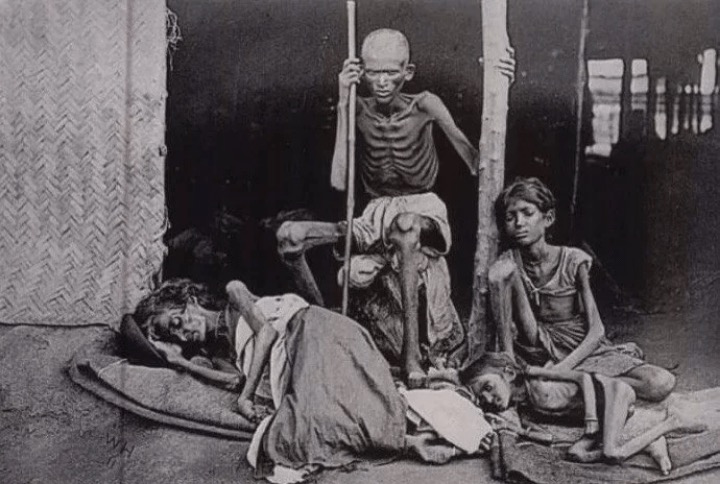
Introduction:
In the annals of history, the Indian famine stands as a haunting chapter that unfolded with profound consequences. With a death toll reaching five million, this catastrophic event left an indelible mark on the collective memory of a nation. In this article, we delve into the causes, consequences, and the poignant stories of survival amidst the horrors of the Indian famine.
Causes of the Famine:
The roots of the Indian famine are intertwined with complex socio-economic factors. During the late 19th century, British colonial policies exacerbated existing vulnerabilities in the Indian agricultural system. Land revenue policies, combined with the exploitative practices of landlords, pushed many farmers into destitution. The widespread reliance on a single crop, such as rice or wheat, made communities susceptible to crop failures.
Impact on Agriculture:
The failure of monsoons, a crucial lifeline for agriculture in the region, led to widespread crop failures. Famine conditions prevailed as fields lay barren, exacerbating the plight of already impoverished communities. With food scarcity reaching alarming levels, prices soared, rendering essential commodities out of reach for the common people.
Government Response:
The response of the British colonial administration to the unfolding crisis has been a subject of historical scrutiny. Critics argue that the policies of the time exacerbated the suffering, with relief efforts often falling short. The prioritization of economic interests over humanitarian concerns has been a point of contention in historical debates.
Individual Acts of Heroism:
Amidst the despair, stories of individual heroism emerged, providing glimmers of hope in the darkest hours. Tales of ordinary people, like the man who guarded his family from cannibals, showcase the resilience and strength of the human spirit. These stories, often passed down through generations, remind us of the enduring capacity for compassion and bravery even in the face of unprecedented adversity.
Legacy and Lessons Learned:
The Indian famine of the late 19th century left an enduring impact on the socio-economic fabric of the country. It served as a catalyst for reevaluating agricultural practices, land policies, and the role of the government in times of crisis. The lessons learned from this tragic chapter contributed to shaping future policies aimed at preventing such widespread devastation.
Conclusion:
The Indian famine stands as a somber reminder of the intricate interplay between socio-economic factors, governance, and the resilience of communities in the face of adversity. As we reflect on this historical tragedy, it becomes imperative to honor the memory of those who suffered and to draw valuable lessons to ensure a more compassionate and equitable future.
Leave a Reply Cancel reply